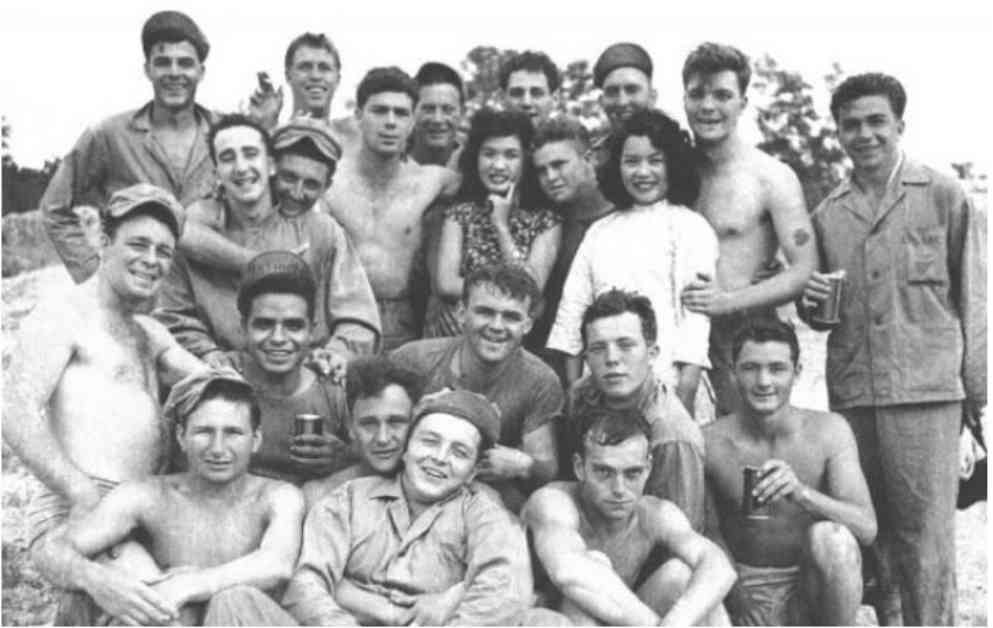During World War II and the early Cold War, the “adoption plan” for international child sponsorship became one of the most successful fundraising strategies for humanitarian work in China and around the world. Most famously promoted by Madame Chiang Kai-shek, the first lady of Nationalist China, to attract overseas sympathy and support for China’s War of Resistance Against Japan, the adoption plan invited foreign sponsors to “adopt” individual Chinese children by paying for them to live in orphanages in China. Sponsors and the children exchanged photographs, gifts, and translated letters that used familial terms of address. American international child welfare organizations seeking to fund their own work in China quickly embraced the adoption plan, which differed from previous humanitarian fundraising strategies by promising a personal relationship between the givers and receivers of aid across national, racial, and cultural boundaries.
The adoption plan was also deeply political. When the Chinese Communists came to power in 1949, they sought to transform the adoption plan into a new form of “people’s diplomacy” by channeling aid to progressive child welfare institutions and encouraging children to write letters about how they had suffered under the U.S.-allied Nationalists but were now thriving under the Communists. After the Communists reversed course and cut off all foreign humanitarian aid to China in 1951, American international child welfare organizations left China for countries such as Japan and Korea, where they reconceptualized the adoption plan as a way to foster affective ties between Americans and the children of their Cold War allies in East Asia. By the mid-1950s, these organizations were also helping to facilitate the first large-scale programs for legal international adoption targeting the mixed-race children of U.S. soldiers and local women.
The Adoption Plan: China and the Remaking of Global Humanitarianism tells the story of how the cause of saving children in China ignited a new global humanitarian imagination and precipitated a transnational struggle for control over the vast quantities of aid that flowed into China on their behalf. In contrast to the conventional view of humanitarian programs as tools of Western influence, I argue that it was often the Chinese recipients of aid who were best able to control its ideological uses.
In this excerpt, I look at the mixed-race children of Chinese women and U.S. soldiers in post-WWII China. Referred to as “jeep babies,” the fate of these children briefly became a cause célèbre in Chinese society in the months following the end of the war. By 1947, all public discussion of jeep babies had abruptly ceased, and they have since been completely forgotten to history: my research did not reveal a single mention of them in Chinese or English since 1947.
In the summer of 1946, a woman named Chen, who lived in a lane house off Avenue Dubail in the former French concession of Shanghai, gave birth to a son with “blue eyes, blonde hair, and a tanned complexion.” Immediately recognizable as “the fruit of an Asian and white biracial union,” the child was quite clearly not her husband’s. As rumors and recriminations swirled among her relatives and friends, it eventually came out that Chen—young, pretty, and conversant in English thanks to her education in mission schools—had been prostituted to a U.S. military officer stationed in China by her husband, who had hoped to secure the officer’s support for his business dealings. But even while Chen was berated by her mother-in-law as a “dirty whore,” the whole family quickly fell head over heels for the mixed-race child, whom they all showered with extra love and affection.
Chen was not the only Chinese woman to give birth to a mixed-race child fathered by an American soldier in the aftermath of World War II. In the months after Japan’s surrender, more than 100,000 U.S. military personnel were stationed in China, and sexual relations between U.S. soldiers and Chinese women, both consensual and coerced, provoked widespread controversy in Chinese society. In reference to the sight of Chinese women riding in U.S. military jeeps, women who socialized with American servicemen came to be known derisively as “jeep girls.” And shortly after the emergence of jeep girls, some Chinese media outlets began predicting that “jeep babies” would be soon to follow. As a January 1946 article in Jing Hua put it, “Last year gave rise to jeep girls. Beginning this year, there will certainly be blue-eyed, blonde-haired jeep babies and jeep kids who appear adorning women’s arms or in trashcans.” Sure enough, by the spring of 1946 mixed-race babies were increasingly noticeable in Chinese cities that hosted large numbers of American soldiers. According to one estimate, as of April 1946 there were at least 110 jeep babies in Chengdu and approximately 260–270 in the wartime capital of Chongqing.
While Chen’s in-laws eventually welcomed her mixed-race child into their home, many Chinese women who gave birth to babies by American soldiers faced strong social pressure to give them up. U.S. War Department policy effectively prohibited marriage between U.S. soldiers and Chinese women, and many of the American servicemen who fathered children with local women would have already departed China before they were born. The women who gave birth to jeep babies were often unmarried, and many likely feared that bringing a mixed-race child home would lead to social ostracization and dim their future marriage prospects. As a result, many women who had become pregnant by U.S. soldiers simply left their babies in the hospitals where they gave birth, “as if they were compensation for medical services.” In Chongqing, this phenomenon was so widespread that several hospitals joined together to create a makeshift “jeep nursery” and hired several wet nurses to feed the babies. By the summer of 1946, as the number of jeep babies quickly exceeded the hospitals’ ability to care for them, Chongqing-area hospitals started placing notices in local newspapers advertising the babies as available for adoption. Much to their surprise, local families vied with each other for a chance to adopt these mixed-race children. Initially, the hospitals had asked for a fee of several thousand yuan to adopt a jeep baby, but in light of the overwhelming demand, the price of adopting one of these babies eventually rose to over 100,000 yuan. In reference to the large sums paid for jeep babies, one article in Haiguang Zhoubao remarked sarcastically, “The reason for this is probably because foreign goods are superior to domestically produced goods.” Other commentators pointed to stereotypes that mixed-race “Eurasian” children were smarter and more attractive.
In retrospect, what is perhaps most remarkable about the phenomenon of jeep babies in post-World War II China is that they attracted so little attention. After receiving limited coverage in Chinese newspapers and periodicals during the first half of 1946, jeep babies quickly disappeared from public discourse in China. Raised by their mothers or adopted into local families, jeep babies did not attract the attention of major Chinese or international child welfare organizations. The children of American soldiers and Chinese women also went unnoticed in the United States. Decades later, during 1982 congressional hearings about extending preferential immigration rights to the children (many of them already adults) who had been fathered by U.S. soldiers in Asia, speakers acknowledged the existence of such individuals in Korea, Vietnam, Laos, Thailand, Japan, the Philippines, and Taiwan. No one seemed aware that American soldiers had also fathered children in China.
There are several reasons why the children of U.S. soldiers and Chinese women did not elicit national or international controversy. Relative to the large numbers of U.S. troops stationed in Japan—and later in Korea and Vietnam—the number of American military personnel in China was comparatively small, and as a result there were fewer children fathered by American soldiers. The exorbitant prices that local families were willing to pay to adopt jeep babies in part resulted from a powerful strain of social Darwinist thought in China that promoted “Sino-Western intermixing as a eugenic vehicle for improving the Chinese race.” And unlike in Japan, Korea, and Vietnam, where the children of local women and Black soldiers were often the focal point of controversy, Chiang Kai-shek had banned Black American soldiers from serving in China, so the fathers of jeep babies were almost exclusively white. Moreover, in December 1946 a nationwide wave of mass protests against the presence of the U.S. military in China broke out in response to an American Marine raping a 19-year-old student named Shen Chong in Beijing. In this atmosphere, many families likely found it prudent to remain quiet about children fathered by U.S. soldiers. For all of these reasons, jeep babies were never placed in the international spotlight—and they never became a target of humanitarian intervention.
As it turns out, however, the little-noticed phenomenon of jeep babies in postwar China was only a brief prelude to a series of major international controversies that would transform international adoption of the mixed-race children of U.S. soldiers and East Asian women into one of the most popular humanitarian causes of the Cold War. In the early 1950s, in the wake of the Allied occupation of Japan, the “mixed-blood” children of American soldiers and Japanese women ignited an intense moral panic that consumed the Japanese media and government, leading many Japanese commentators to call for their mass deportation to the United States. After the Korean War, the children of American soldiers and Korean women became a cause célèbre in the United States, and many Americans appealed to exaggerated descriptions of the plight of “Amerasian” children in Korea to argue that it was Americans’ moral duty to take them in. Later, in the 1980s, the plight of Vietnamese Amerasians fathered by U.S. soldiers also became a prominent humanitarian cause, eventually leading to the passage of the Amerasian Homecoming Act in 1987 to facilitate their migration to the United States. In response to the transnational moral panics sparked by the children of American military personnel and East Asian women, many Americans came to see legal international adoption as a form of moral atonement for the sins of U.S. soldiers abroad—as well as a way for the United States to demonstrate benevolent concern for important East Asian allies.

















